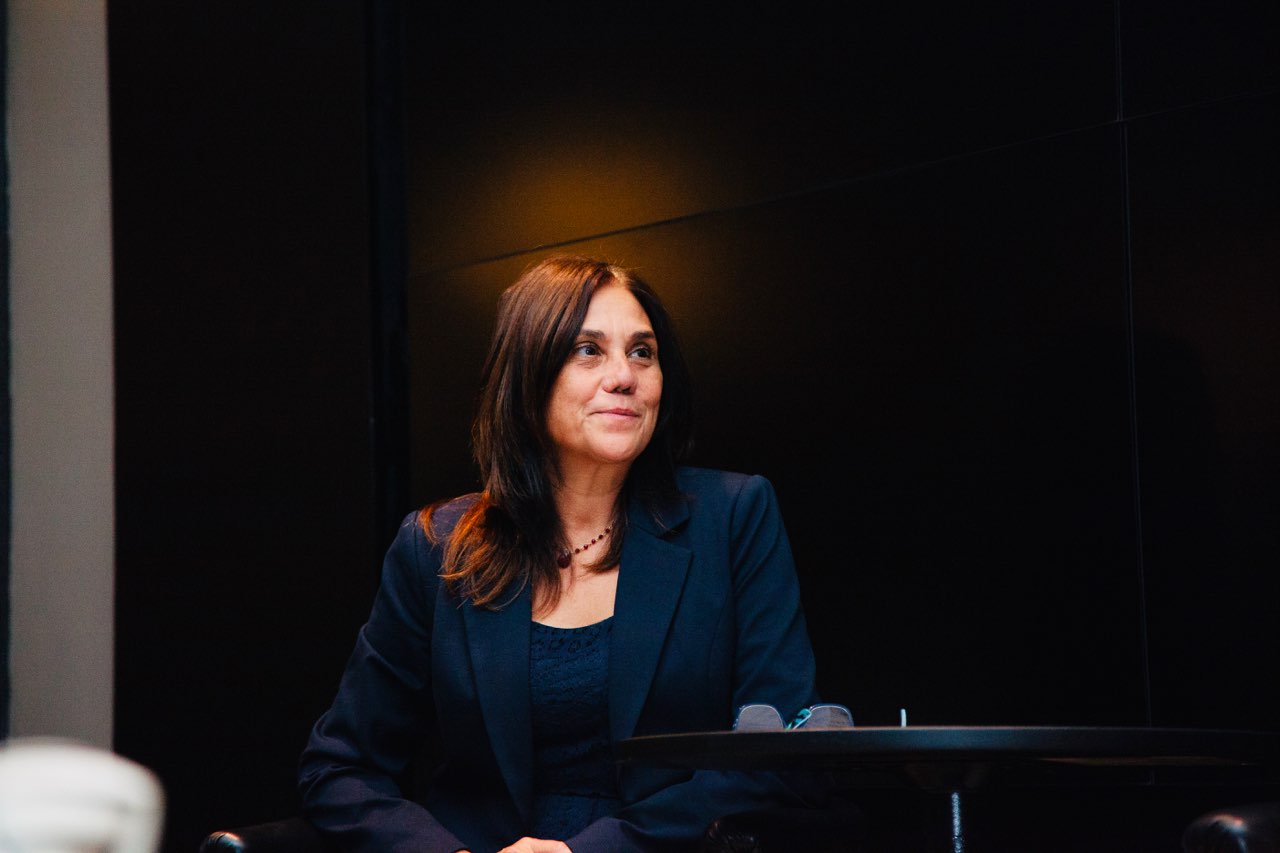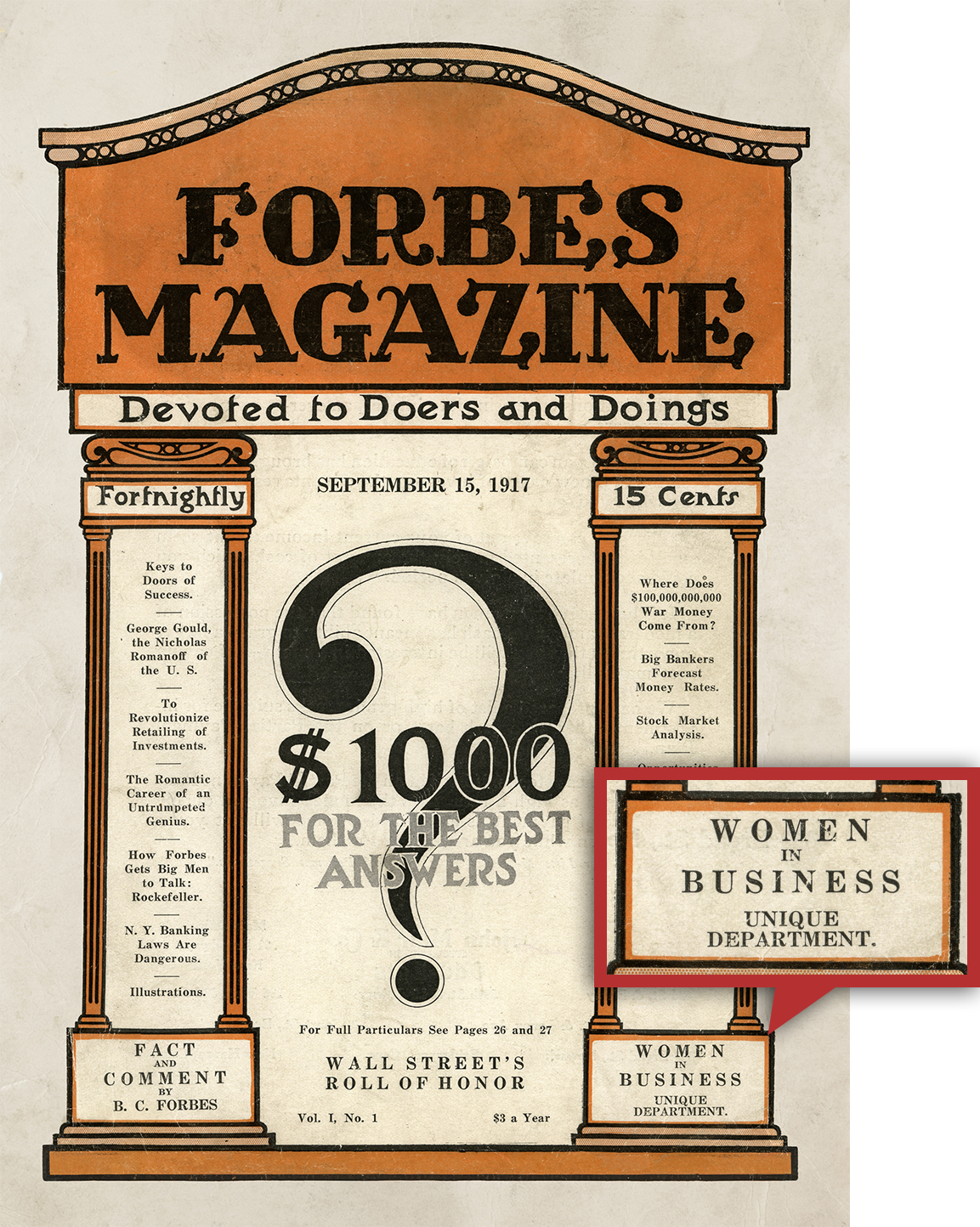Forbes' Rise From Gender Balance Failure to Active Ally: A Q&A with Task Force Chair Caroline Howard
photo credit: David Shankbone [CC BY 2.5], via Wikimedia Commons
Six weeks ago, we learned that the Forbes America’s Most Innovative Leaders list featured 99 men and one — yes, just one — woman. Needless to say, the GenderAvenger community sprang into action. We used social media to raise an uproar. Being on Forbes alert, we also took notice of the 2019 Forbes Under 30 Summit and decided to check out its speaker lineup, which it turns out included 43% women, 41% of whom are women of color. As a result, we went on social media to let folks know that Forbes earned a Silver GA Stamp of Approval for this event.
This is what GenderAvenger does. When we count and find egregious gender imbalance, we call it out, and, when we count and find strong gender balance, we reward good behavior.
Now for what happened in between the 1% women America’s Most Innovative Leaders list and the 2019 Under 30 Summit.
It began with an email exchange with Forbes Editor Randall Lane. I made suggestions, and he passed them on to a newly created task force and promised quick decision making about how to go forward.
Moira Forbes, third generation and first Forbes woman to hold an executive position in the family business, asked to meet. I read her strong response to the list kerfuffle. I looked at ForbesWomen and listened to a couple of episodes of the podcast. After we spent an hour together — with phones silenced — I knew she had done some googling of her own and scanning of the GA website. We went beyond niceties. I said I had mixed emotions about publications like ForbesWomen, because all too often such adjuncts to the main publications are revenue generating substitutes or diversions from true attention to women in the primary outlet. Moira made the case that when the purpose is clear, the distinctive attention is helpful.
I told Randall I would be writing this blog to let the GA community know about the effect of its efforts and my impressions of the response by Forbes. He gave me the piece they posted about the Task Force Findings. It occurred to me that we could learn and share more about the process as a way to acknowledge what they have done — and plan to do going forward — as an example for others who all too often are either defensive or simply make promises to do better.
So, I asked if we might interview the Task Force Chair Caroline Howard. I am delighted to pass on the Q&A that ensued.
Caroline Howard, Director of Editorial Operations at Forbes. Photo credit: Uyen Cao.
GINA: Tell me about yourself and your history with Forbes.
CAROLINE: My title is Director of Editorial Operations. I help architect our ongoing digital transformation of Forbes. I oversee our US and Europe news bureaus, about 200 people in the newsroom, and our 2,700 member strong contributors’ network. I started at Forbes in 2009 as deputy editor of ForbesWomen at its digital launch, so I have really been with Forbes on the topics of women’s issues, gender parity, and women entrepreneurs in business from the get go. I was appointed as one of the founding editors of 30 Under 30 in 2012 and lead that project until 2018.
GINA: What was your first reaction to the outpouring of criticism of the List?
Forbes Magazine’s inaugural 1917 cover
CAROLINE: So the word I would use is shocked. It was not what I was witnessing and taking part in and contrary to the Forbes that I know. The reason being is that I knew Forbes has been championing women in business since 1917 — it was the very first cover of Forbes. I came here knowing this company had a commitment and my time here has been rewarding personally and professionally. I consider myself to be both a witness to and instrument of real changes in the newsroom. In the years that I’ve been here, featuring women on the cover of Forbes has become a regular practice. Also, women subjects — entrepreneurs and championing self — made women, younger women who are doing really interesting things.
The other change has been in the newsroom. When I came here, the top brass of the magazine and digital were all male. In the years since I have been here, there have been notable hires, including myself, to positions of authority in the newsroom and a slew of hiring of women reporters, video producers, and editors. As I look out at the newsroom, I pretty much see gender parity and diversity. It gives the newsroom an effervescence that is a real draw for people and that’s why people stay with the company for a very long time.
GINA: What do you think sparked the transformation?
CAROLINE: I believe it started with the ForbesWomen franchise. That was a very powerful statement both inside and outside the company and it’s only accelerated from there.
GINA: Tell me about the task force.
CAROLINE: It took me time to digest what happened and I knew the only way to move forward was to do something and then Randall appointed me to the task force. There were seven people on the task force, some who have been with the company for twice as long as I have and some who joined in the past year who could provide fresh eyes. They were experts at putting together lists, fact checkers, and people of diverse backgrounds. The only ground rules were honesty, respect, and that we would not come away with recommendations unless there was full consensus.
GINA: The task force addresses both the development of new approaches to list making and the importance of a strong internal culture of openness to these issues. Tell me more.
CAROLINE: I want to comment on the second recommendation, a “clear reporting chain that encourages and values all newsroom stakeholders’ suggestions.” Making sure that everyone on the staff understood that these issues of bias are of the highest editorial priority for Randall and myself. Everyone is expected to let us know when they see it, which is something that has been transmitted to everyone on staff. It has already resulted in two people coming to me with concerns in the past month which were immediately addressed.
It’s been something that has reverberated in concentric circles across the organization. The entire organization is committed to diversity. What happened here, everyone across the company doubled down. Obviously, our voice is driven by editorial but the other functions of the company are involved as well.
The third recommendation — “map out opportunities to spotlight or report inequities; experiment with new lists” — is important because it’s an editorial priority to continue to work hard to spotlight new stories. 30 Under 30 is an example of experimenting with a new list that is celebrating a super diverse, impactful generation of people and that’s what we should continue to do.
*******
I really want to thank Moira Forbes, Randall Lane, Matt Hutchison, and Caroline Howard for their recognition of GenderAvenger’s work and their openness to the progress we all seek.
This is why I started GenderAvenger and why you support it. A relationship with a major media company with influence is a really good thing, especially when it goes beyond social media to the realm of personal conversations. We now know that Forbes leadership opted for and is committed to improvement, and they know we will keep watching and counting.




